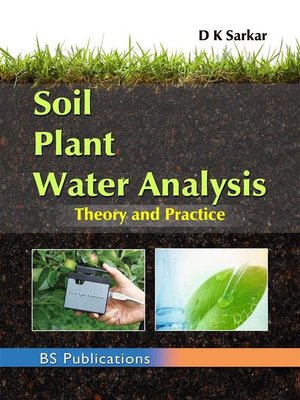
Sign up to save your library
With an OverDrive account, you can save your favorite libraries for at-a-glance information about availability. Find out more about OverDrive accounts.
Find this title in Libby, the library reading app by OverDrive.



Search for a digital library with this title
Title found at these libraries:
| Library Name | Distance |
|---|---|
| Loading... |
The book is designed for the undergraduate and postgraduate students of agriculture and biology and the analysts of the laboratories of the line Departments who need to undertake the analysis of soil, plant and water samples. Basics of analytical chemistry are adequately dealt, primarily because the analysis of soil, plant and water comes under the domain of the subject of analytical chemistry, and a command in the subject stated is certain to add to the mastery on the skill of the task.
The book has been divided in six Parts of which the first one is for the fundamentals of quantitative analysis. The second and third ones are on different aspects and preparation of standard solutions of the reagents that find frequent use in a soil plant water analysis laboratory, and spectrophotometry, respectively. The remaining three Parts are devoted to the analysis of soil, plant and water samples in the sequence as mentioned. Each Part is again divided into Chapters, wherever warranted.
Derivation of a formula used in calculations following an analysis is explained in lucid terms. Illustrations are adequate for the purpose of comprehension. A good number of model calculations with worked out solutions is aimed at enabling the users of the book in handling such problems at ease.
The book has been divided in six Parts of which the first one is for the fundamentals of quantitative analysis. The second and third ones are on different aspects and preparation of standard solutions of the reagents that find frequent use in a soil plant water analysis laboratory, and spectrophotometry, respectively. The remaining three Parts are devoted to the analysis of soil, plant and water samples in the sequence as mentioned. Each Part is again divided into Chapters, wherever warranted.
Derivation of a formula used in calculations following an analysis is explained in lucid terms. Illustrations are adequate for the purpose of comprehension. A good number of model calculations with worked out solutions is aimed at enabling the users of the book in handling such problems at ease.







